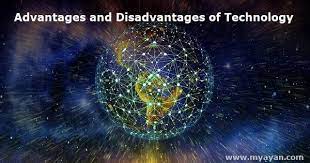We use it every day, from our smartphones and laptops to our cars and homes. But with the increasing reliance on technology, we must also consider its advantages and disadvantages. Is technology a boon or a bane? Let’s explore.
Introduction
In this article, we will discuss the advantages and disadvantages of technology. We will examine how technology has affected our lives and how it has impacted various industries, including healthcare, education, and business. We will also look at the ethical and social implications of technology and explore how it has changed our communication and social interactions.
The Advantages of Technology
Increased Efficiency
One of the biggest advantages of technology is its ability to increase efficiency. Automation and digitalization have streamlined many processes, reducing the time and effort required to perform tasks. This has improved productivity and allowed us to accomplish more in less time.
Improved Communication
Technology has also revolutionised the way we communicate. With instant messaging, video conferencing, and social media, we can connect with people all over the world in real-time. This has made it easier to stay in touch with loved ones, collaborate with colleagues, and expand our social networks.
Enhanced Education
Online courses, educational apps, and digital textbooks have made learning more flexible and personalised. Virtual and augmented reality have also created immersive learning experiences, allowing students to explore complex concepts in a fun and interactive way.
One of the most significant impacts of technology on education is the rise of online learning. Online courses, also known as Massive Open Online Courses (MOOCs), offer learners access to a wealth of knowledge and expertise from top universities and institutions around the world. MOOCs are typically free or low-cost and can be accessed from anywhere with an internet connection.
Advancements in Healthcare
Technology has had a significant impact on healthcare. Medical devices, such as MRI machines and pacemakers, have improved diagnosis and treatment. Telemedicine has also made it possible to receive medical care from remote locations, improving access to healthcare for people in rural or underserved areas.
The Disadvantages of Technology
Dependence on Technology
One of the biggest disadvantages of technology is our increasing dependence on it. We have become so reliant on technology that we struggle to function without it. This can lead to addiction, anxiety, and other mental health issues.
Job Losses
Automation has also resulted in job losses, particularly in manufacturing and other industries that rely on manual labour. As machines become more advanced, they can perform tasks that were previously done by humans, leading to unemployment and economic inequality.
Cybersecurity Threats
As we rely more on technology, we also become more vulnerable to cybersecurity threats. Hackers can steal personal and financial information, and malware can infect our devices, causing data loss and system damage. This can have serious consequences for individuals and businesses alike.
Social Isolation
While technology has made it easier to connect with people, it has also created social isolation. People spend more time interacting with their screens than with each other, leading to a decline in face-to-face communication and social skills.
The Ethical and Social Implications of Technology
Privacy Concerns
As we share more personal information online, our privacy becomes a major concern. Companies and governments can track our movements, monitor our behaviour, and collect data without our knowledge or consent. This raises questions about surveillance, data ownership, and the right to privacy.
Digital Divide
Technology has also created a digital divide, with some people having access to the latest technology and others being left behind. This can exacerbate existing inequalities, particularly in education, healthcare, and employment.
Impact on the Environment
Electronic waste is a growing problem, with millions of tons of discarded electronics ending up in landfills every year. This can release toxic chemicals and contribute to climate change.
Conclusion
On one hand, technology has improved efficiency, communication, education, and healthcare. On the other hand, it has created dependence, job loss, cybersecurity threats, and social isolation. It is up to us to balance the benefits and risks of technology and use it in a responsible and ethical way.
Frequently Asked Questions (FAQs)
- Is technology always a good thing?
- No, technology has both advantages and disadvantages. It is up to us to use it in a responsible and ethical way.
- How has technology affected education?
- Technology has made education more accessible and engaging. It has also created new opportunities for personalised and immersive learning.
- What are some examples of cybersecurity threats?
- Cybersecurity threats include hacking, phishing, malware, and ransomware. These can lead to data loss, system damage, and financial loss.
- What is the digital divide?
- The digital divide refers to the gap between people who have access to technology and those who do not. This can exacerbate existing inequalities, particularly in education, healthcare, and employment.
- How can we use technology responsibly?
- We can use technology responsibly by being aware of its risks and benefits, using it in a balanced and ethical way, and protecting our privacy and security online.
